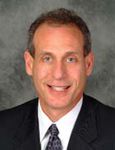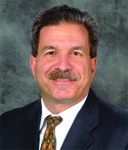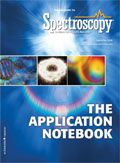From the Publishers
This September issue of The Application Notebook should be reaching our audience just as the busiest time of the year ramps up in the world of spectroscopy.
They say that timing is everything, and though this saying may have originally been applied to Broadway and Vaudeville in the early twentieth century, it is just as true when it comes to the field of modern-day materials analysis. For this September issue of The Application Notebook should be reaching our audience of analytical chemists, lab managers, and other industry professionals just as the busiest time of the year ramps up in the world of spectroscopy.

Michael J. Tessalone
The coming months will see a spate of conferences and symposia taking place in locations from Reno, Nevada, to Philadelphia, Pennsylvania, to just about everywhere in between. And this year, for the first time, you can add Spectroscopy to the list of publications and organizations who will be hosting such an event. "The Spectroscopy Summit" will be taking place in early November in Boston, Massachusetts, and we are looking forward to presenting attendees with one of the most informative, dynamic events of the season. Held in conjunction with SPIE and utilizing their formidable and extensive conference-organization resources, this event will certainly attract the best and brightest in the field of materials analysis. Please check either the Spectroscopy website (www.spectroscopyonline.com) or the SPIE website (www.spie.org) to find out the exact dates. We certainly hope you will join us in Boston, and we look forward to seeing you there.

Edward Fantuzzi
In the meantime, we would also like to take this opportunity to introduce the newest member of our sales team, Stephanie Shaffer. Stephanie has many years of experience in this field and will be a great asset to Spectroscopy and LCGC. Her contact information can be found in the masthead along with our own, and we encourage you to contact any one of us with any questions you might have. Information about submitting materials for the February 2009 edition of this series can be found on page 35, and as always, please enjoy the issue.
Michael J. Tessalone
Science Group
Publishermtessalone@advanstar.com
Edward Fantuzzi
Publisher

Thermo Fisher Scientists Highlight the Latest Advances in Process Monitoring with Raman Spectroscopy
April 1st 2025In this exclusive Spectroscopy interview, John Richmond and Tom Dearing of Thermo Fisher Scientific discuss the company’s Raman technology and the latest trends for process monitoring across various applications.
A Seamless Trace Elemental Analysis Prescription for Quality Pharmaceuticals
March 31st 2025Quality assurance and quality control (QA/QC) are essential in pharmaceutical manufacturing to ensure compliance with standards like United States Pharmacopoeia <232> and ICH Q3D, as well as FDA regulations. Reliable and user-friendly testing solutions help QA/QC labs deliver precise trace elemental analyses while meeting throughput demands and data security requirements.